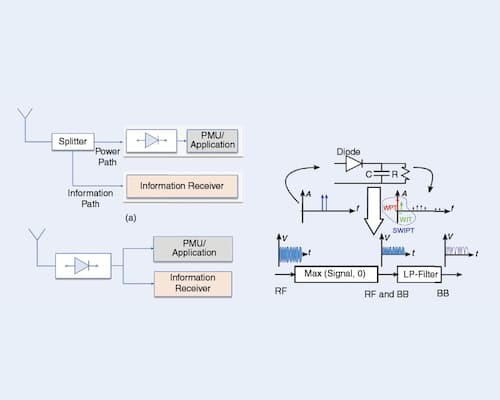Versatile Rectifiers 2.0: Theory, Design, and Emerging Applications
Abstract
This article focuses on the versatility of rectifier circuits. An overview of novel concepts based on rectifiers’ unconventional operating principles is provided. Besides the traditional conversion of intentional and unintentional power for energy harvesting and WPT applications, rectifiers are shown to be key components for a range of emerging applications, such as tracking, sensing, monitoring, and localization.
https://ieeexplore.ieee.org/document/11023925